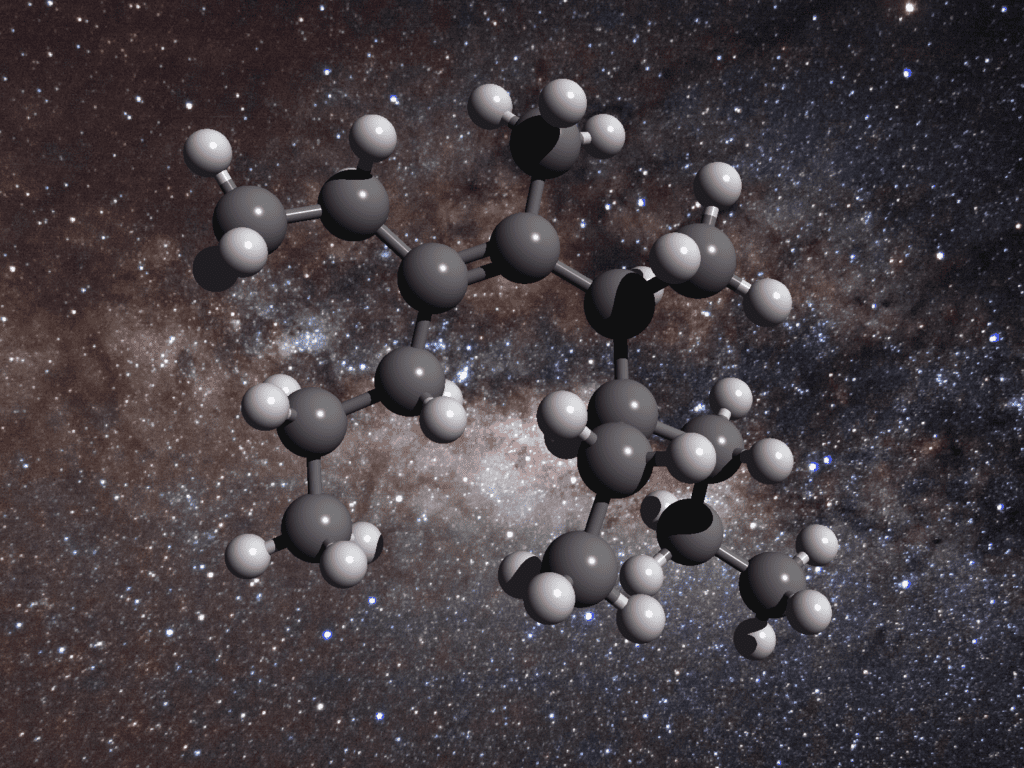Interstellar space is dark, cold, and surprisingly sticky. According to a recent study, the Milky Way’s interstellar medium is packed with toxic, grease-like carbon-based compounds, which are far more abundant than previously thought.

Illustration of the structure of a greasy carbon molecule. In this picture, carbon atoms are colored grey while hydrogen atoms are white spheres. Credit: Royal Astronomical Society.
Astronomers at the University of New South Wales (UNSW) in Australia and Ege University in Turkey found there was five times more interstellar grease ‘lubricating’ the Milky Way than previous estimates indicated. This ‘grease’ is actually aliphatic carbon, an oily form of hydrogen-bound carbon.
“This space grease is not the kind of thing you’d want to spread on a slice of toast!” said Professor Tim Schmidt from UNSW Sydney in a statement.
“It’s dirty, likely toxic and only forms in the environment of interstellar space (and our laboratory),” he added.
Scientists are interested in aliphatic carbon because it’s among the several types of carbon that get leaked by stars. It’s an important ingredient in the formation of new stars and planets, so gauging its abundance is essential if astronomers want to precisely model the universe. We also don’t know exactly how much carbon — the essential element for life — there is in the universe. Current observations suggest that only half of what is expected can be found in carbon’s pure form — the rest is chemically bound in two main forms: grease-like (aliphatic) and mothball-like (aromatic).
Schmidt and colleagues set out to measure how much greasy carbon there is by recreating interstellar dust in the lab. They essentially mimicked the process by which stars synthesize gases by expanding a carbon-rich plasma (ionized gas) in a vacuum chamber. Then, using spectroscopy, the researchers measured how strongly the interstellar dust byproduct absorbed certain wavelengths of infrared light.
The team determined that there are about 100 interstellar-grease atoms for every 1 million hydrogen atoms, accounting for between a quarter and a half of the available carbon in the universe. That’s way more than previous estimates indicated, the authors reported in the Monthly Notices of the Royal Astronomical Society.
With this new information in hand, scientists can gain a better grasp of how galaxies form and evolve. Also, since it’s an essential ingredient for life, knowing how much carbon is available in its various forms can give us a clue of how many potentially life-harboring systems can form in the Milky Way.
“It’s also intriguing that organic material of this kind – material that gets incorporated into planetary systems – is so abundant,” Schmidt said.









